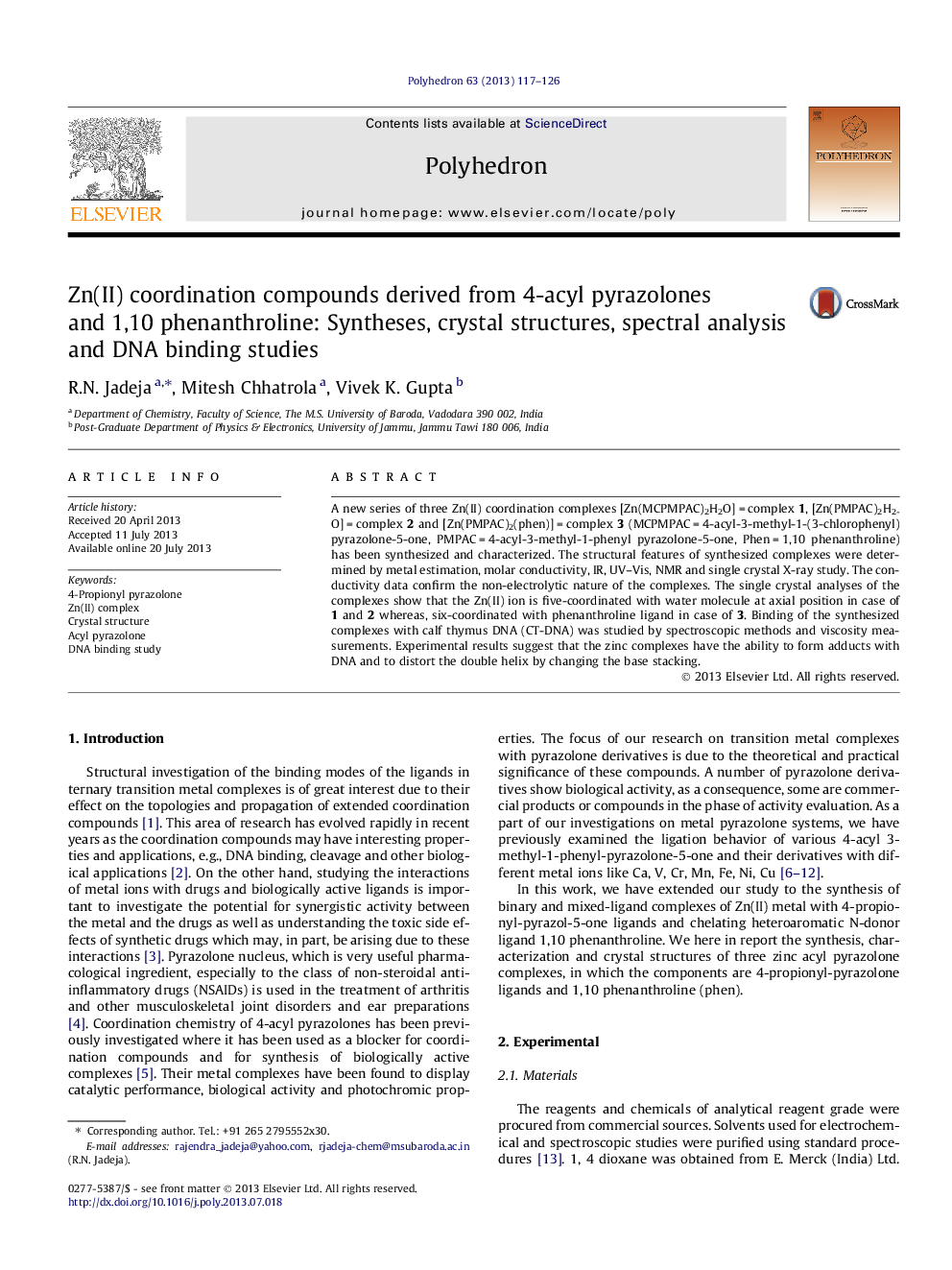| کد مقاله | کد نشریه | سال انتشار | مقاله انگلیسی | نسخه تمام متن |
|---|---|---|---|---|
| 1335565 | 1500276 | 2013 | 10 صفحه PDF | دانلود رایگان |

A new series of three Zn(II) coordination complexes [Zn(MCPMPAC)2H2O] = complex 1, [Zn(PMPAC)2H2O] = complex 2 and [Zn(PMPAC)2(phen)] = complex 3 (MCPMPAC = 4-acyl-3-methyl-1-(3-chlorophenyl) pyrazolone-5-one, PMPAC = 4-acyl-3-methyl-1-phenyl pyrazolone-5-one, Phen = 1,10 phenanthroline) has been synthesized and characterized. The structural features of synthesized complexes were determined by metal estimation, molar conductivity, IR, UV–Vis, NMR and single crystal X-ray study. The conductivity data confirm the non-electrolytic nature of the complexes. The single crystal analyses of the complexes show that the Zn(II) ion is five-coordinated with water molecule at axial position in case of 1 and 2 whereas, six-coordinated with phenanthroline ligand in case of 3. Binding of the synthesized complexes with calf thymus DNA (CT-DNA) was studied by spectroscopic methods and viscosity measurements. Experimental results suggest that the zinc complexes have the ability to form adducts with DNA and to distort the double helix by changing the base stacking.
A series of three new Zn(II) coordination complexes has been synthesized using propionyl pyrazolone ligands, 1, 10, phenanthroline and zinc acetate. The structural features of synthesized complexes were determined by different techniques including single crystal X-ray studies. DNA-binding studies of the synthesized complexes with CT-DNA have been carried out by spectroscopic methods and viscosity measurements. Experimental results suggest that the zinc complexes have the ability to form adducts with DNA and to distort the double helix by changing the base stacking.Figure optionsDownload as PowerPoint slide
Journal: Polyhedron - Volume 63, 31 October 2013, Pages 117–126